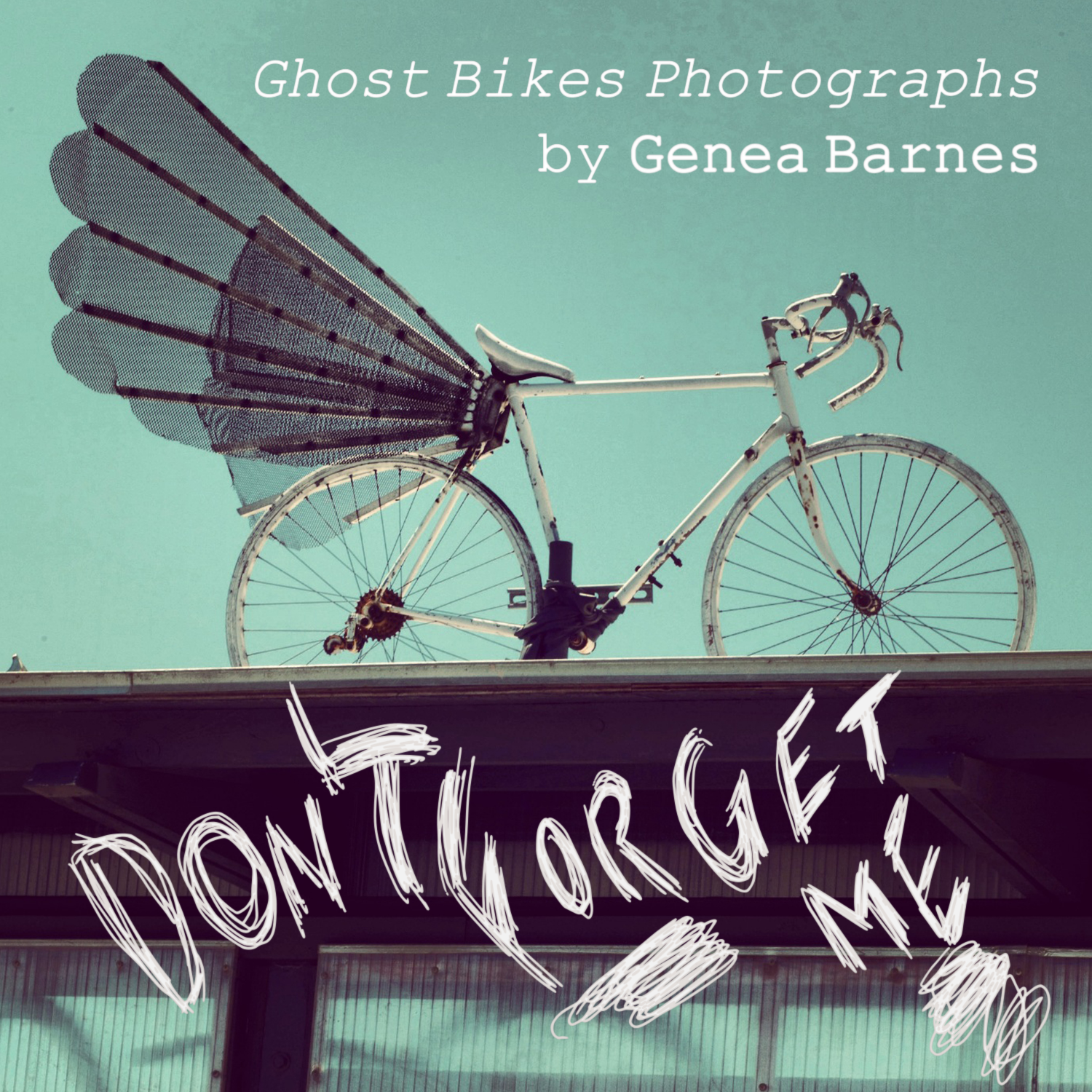Genea Barnes
”Don’t Forget Me”: Ghost Bikes Photographs
July 23 to September 8, 2019
For New Yorkers young and old, bike rides are ubiquitous during summer in the city. As more cyclists share the streets with cars and pedestrians, this is also a season when bike safety is emphasized. Sadly, hundreds of cyclists are killed nationally each year in traffic accidents.
Temporary memorials are often erected at the sites of these accidents: photographs, flowers, candles, and even bikes painted in white called “ghost bikes.” In most cities, these memorials are often removed within a few months, sometimes weeks. For the bereaved family and friends, these mementos are a way to honor their loved ones and call our attention to how quickly carelessness can take away a life. In Genea Barnes’ collection of photographs documenting ghost bikes from around the country, she invites us to pause and pay respect to the dead even as we contemplate how we live.
In a world that is fast and fleeting, how do we move deliberately, respectfully, carefully, and lovingly? How do we live with caution even as we delight in the joys of sun, air, sky, and our own physicality? What would it look like to keep not just ourselves safe but to also truly watch out for one another?
Opening |Tuesday, July 23 | 6:30-8:30 pm | RSVP here.
Gallery Talk | Tuesday, July 30 | 7:00-8:30 pm | Free tickets here
.
"Don't Forget Me" | Ghost Bike Photographs
Interview with Genea Barnes
How did you get the idea for this project?
In May 2010, I was living in San Francisco and used to come to New York pretty regularly. I was walking around shooting stuff and saw my first ghost bike. It just hit me as something really profound. I rode a bike. I’m not a crazy bike rider, but it was my main means of transportation, and I was just struck. I saw a couple more over the course of my trip, and wanted to come back and shoot them, and it snowballed from there. I sought them out in every city I went to over the next few years, and decided I wanted to make a full project out of it. I did a Kickstarter and funded a road trip. I flew to NY to start it, went down the east coast, and zig-zagged up through the midwest and Canada and back down through Vermont, New York, and Maine.
How did you choose your route?
I knew there were a lot of ghost bikes in New York. In my other travels I discovered they were often cut down very soon after they were placed. My idea was to be able to cover as much ground as I could in the amount of time that I had, and usually bigger cities had more opportunities for ghost bikes, so I chose parts of the country where I could travel from city to city as quickly as possible.
How did you find ghost bikes in a city?
There is a website called ghostbikes.org that I originally used to find my ghost bikes. But I discovered you can’t really go by what was placed at one time. So I did a ton of research. I mapped out the basic areas I wanted to hit, and reached out to people in the bicycle communities in those towns to find out if there were any that were up.
How did the ghost bike phenomenon start?
I believe a man in St. Louis did an art project where he painted bicycles white and locked them to every intersection where a cyclist had been killed. People saw it and were moved by it. Now you find them in Europe and South America. It’s not just in the United States.
What is it like to stand at one of those sites?
You see a lot of roadside memorials, and you always know somebody died there, but you don’t know how it happened. When you stand at a site and you see a ghost bike, you know there was a moment in time where someone was careless and not paying attention to where they were in reference to other people or things around them. And that is something that affects all of us, not just people that ride bikes. We are so in our own heads and in our devices that we are not conscious of where we are in space anymore. And so a ghost bike is such a reminder of the worst possible outcome of that lack of awareness.
Do any of the bikes you’ve seen stand out in your mind?
There's one in Chicago I was at twice over the span of two years, and I believe that after the winter, the mom went out and redecorated it. Right outside of Detroit, they take the ghost bike down for the winter and then they put it back up. I think that sometimes when bikes are placed by loved ones there’s more care to the decoration and the representation of who the bike was for, the actual person. But I think the power of the idea is really the thing that keeps them the same. It doesn’t matter if the bike is completely stripped, barely there. It’s still a reminder to be cautious, and remember what’s happened and do our best to not repeat the past.
facing image: “Chris Robertson” by Genea Barnes





















